Sunday, February 21, 2021
Within the present boundaries of the City of Toronto lie the sites and remains of all the small communities that used to surround the city when it was much smaller. Some of these places have very nearly disappeared but if you know where to look there is still a ghost of the community that once was. This blog collects 12 of the ones that we have visited and arranges them in alphabetical order. Each has a picture that represents the community as well as a brief description. The link for each will take you to a feature article on the community which has the local history as well as pictures of any surviving architectural features. At the end of each feature article is a google maps link in case you should wish to explore for yourself someday. Future companion blogs in this series will cover the ghost towns of the Regions of Peel, Halton, and York, excluding Toronto.
Armadale sat at the intersection of Steeles Avenue and Markham Road. It bordered with Markham which is on the north side of Steeles Avenue. Today there are five historic houses as well as the oldest continually serving Free Methodist Church in Canada. It was built in 1880 and its cemetery and parsonage still survive as reminders of a simpler past.
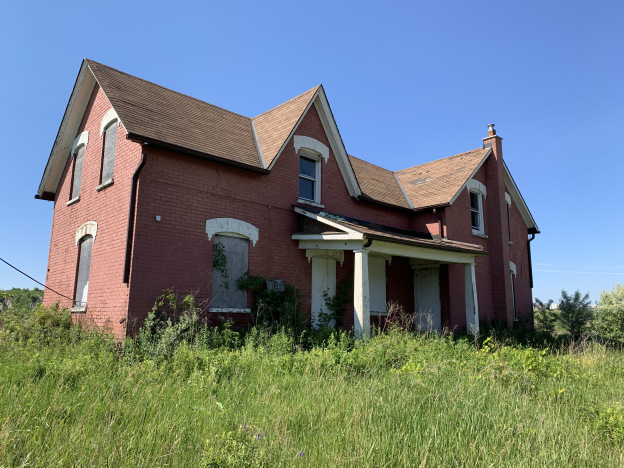
Claireville was started in 1850 and became a toll stop on the Albion Plank Road. It grew to 175 people but today has fallen back to just a few houses in an industrial park. It is flanked by a section of Indian Line which has been cut off and abandoned.
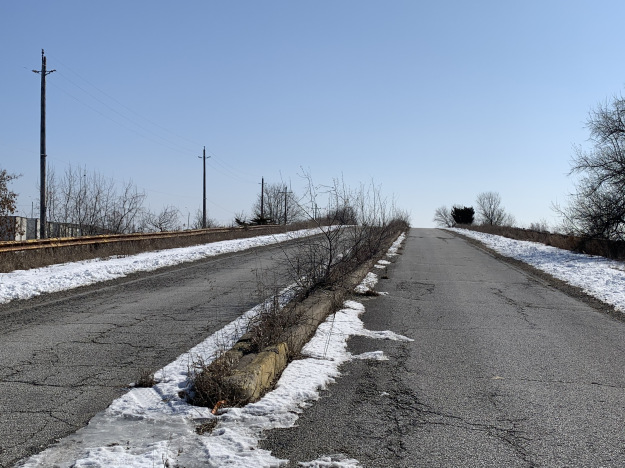
The town of Downsview was named after a home that was called Downs View. It was built in 1844 by a Justice of the Peace who sometimes locked up the convicts in the cells in his basement. The town is mostly gone now but the 1860 Methodist Church still stands.
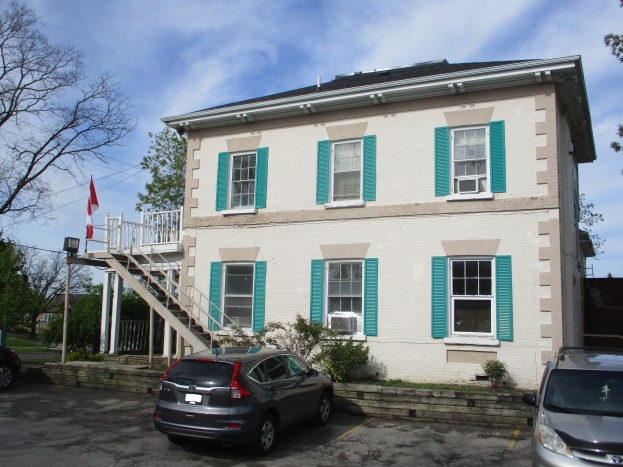
The town of Eglinton has been completely absorbed into Toronto but there’s still a few clues to the community that grew at Yonge and Eglinton. The second school was built in the 1890’s and that has been absorbed into John Fisher School.
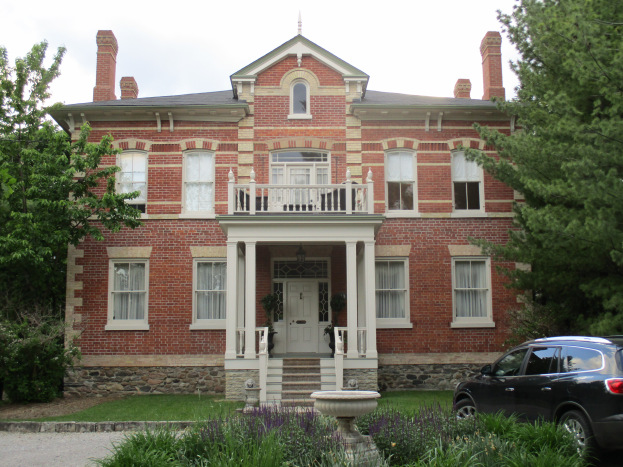
Jacob Fisher got a land grant in 1797 at Dufferin and Steeles where mills attracted a small community who built a Presbyterian Church in 1856. That church building survives at Black Creek Pioneer Village but the rest of the community of Fisherville has vanished.

Flynntown is marked by the remains of its milling industries. There are rough hewn logs that are the remainders of an early saw mill and a much later set of concrete weirs that are the remains of the dam across the Don River.

Lambton Mills grew up on both sides of the Humber River and several early homes and the hotel still survive. Lambton House was built in 1848.

By 1837 the community of Norway had grown to about 80 people centred on the toll station on Kingston Road at Woodbine. A few older buildings still line Kingston Road but the most obvious reminder of the community is the Norway Anglican Church which was built in 1893.
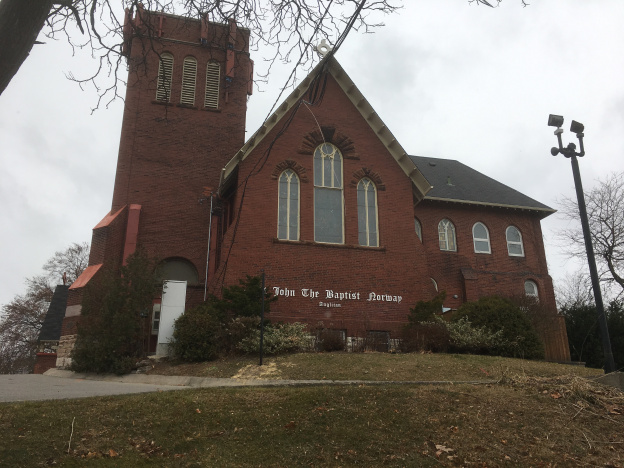
The town of Oriole was a thriving industrial site with seven mills and a brickyard on The Don River at Sheppard and Leslie. Road expansions have eliminated most of the physical history but one of the old dams still survives.

The town of Richview has disappeared under the intersection of highway 401 and 427 and their various on ramps. All that remains is the cemetery which is surrounded by the highways and can only be accessed off of Eglinton Avenue.

A couple of churches survive to mark the old community of Wexford. St. Judes, pictured below, was built in 1848.
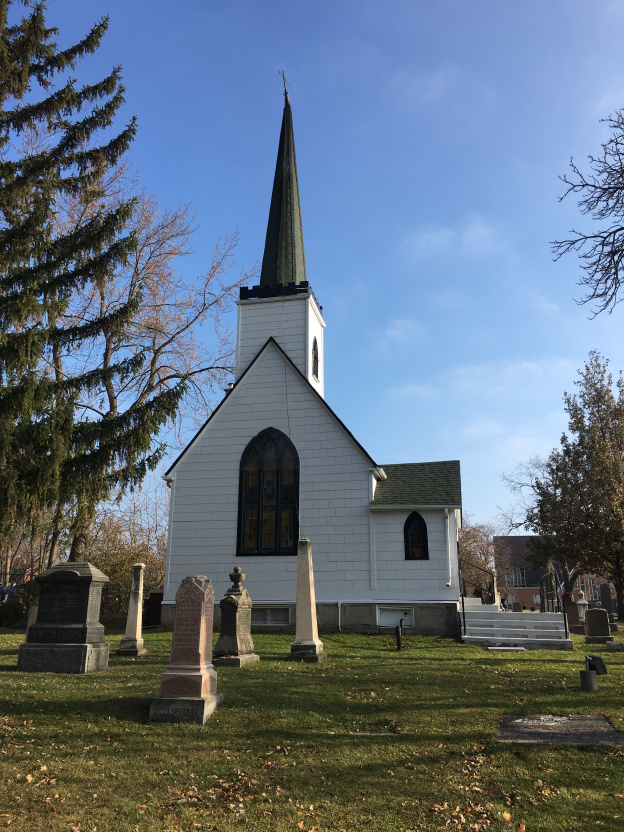
York Mills grew up around several mills on the Don River where it crossed Yonge Street. Several older homes have survived as has the York Mills Hotel which was built in 1857.

Toronto had small communities that sprouted up at nearly every cross roads on the edges of town. The march of progress has wiped most of these places off the map but small hints are there to remind us of these little bits of our past.
Like us at http://www.facebook.com/hikingthegta
Follow us at http://www.hikingthegta.com
Also look for us on Instagram

I remember as a child driving over the Indian Line road after Horse back riding at what is now called Humberwood drive. Used to love it, now not so much. Mind you good to see some of the land still in use as a park
Fascinating! ThNk you very much.
>
Hello. I’m a journalism student at Ryerson and I’m writing an article about stories that commemorate this time in history for us. Any stories you have that you could put in a time capsule and if someone looked back on this time, that story would encapsulate it pretty well. It could be a happy or sad or any type of story! If you have a story that you would like to share, either big or small, please let me know and we can have an interview! Thank you!
a lot of farm properties were bought up ”in protest” because the ”powers that be” were going to build a new airport up by Markham and the Stouffville area ,there was a lot off anger at the time and many long term families were forced of their farm land, they had had for generations ,was terrible stress for the property owners ,as l understand it still there is no airport there yet ! ! what ever was the end result ??
Pingback: Ghost Towns of Halton Region | Hiking the GTA
Pingback: Ghost Towns of York Region | Hiking the GTA